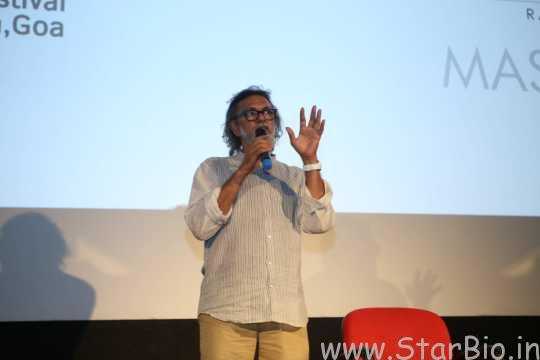Director Rakeysh Omprakash Mehra believes that screenplay is about subtexts and moments, never about camera movements.
“For me, a screenplay is never written. It is always rewritten, and rewritten and rewritten. A lot of times you mistake a story as a screenplay. I don’t think it’s that,” the Rang De Basanti (2006) filmmaker said while speaking at a masterclass ‘Nuances of Inspirational Cinema’ on 27 November at the 49th International Film Festival of India (IFFI) in Goa.
Giving examples of a novel and play, Mehra spoke about what a screenplay is. “A novel plays in your mind. If I give the same novel to all of you, you will all imagine your own story reading the same book. A novel plays in your headspace, not on the page. In a play, 150 of you will see the same thing that unfolds in front of you.
“A screenplay is a story told in pictures, never in words. Yes, there are some amazing words and dialogues which make us laugh. But it’s always the subtext, the moments, and that’s a screenplay. It’s not camera movements,” he said.
Revisiting Milkha Singh’s inspirational biopic – 5 years of Bhaag Milkha Bhaag
Bhaag Milkha Bhaag (2013), the biopic on athlete Milkha Singh, was screened as part of the Khelo India campaign at IFFI 2018. Other films screened as part of the campaign were Reema Kagti’s Gold (2018), Omung Kumar’s Mary Kom (2014), Abrid Shine’s 1983 (2014), Neeraj Pandey’s MS Dhoni: The Untold Story (2016) and Soorma (2018).
Scoring gold: How sports films became popular in India
Mehra also mentioned that he learnt screenplay writing from American screenwriter Syd Fields, who authored the book Screenplay: The Foundations of Screenwriting.
“When I was doing the shooting draft of Bhaag Milkha Bhaag (2013), [story-screen-dialogue writer] Prasoon Joshi had given me the story and dialogues. I felt that I had not seen the film, and I had to start rewriting it step by step. I took out all the scene headings, interior-exterior, and I started writing it as a continued [sic]. It was not my job to do the interior-exterior, my job is to tell the story and how it unfolds.
“Somewhere [I was] trying to see the film continuously. Never say ‘cut to’. How do I know ‘cut to’ or ‘fade in’? How do I know how a camera will move till I don’t see what’s going on? Till I don’t see how the actor wants to do it, how the weather is behaving or how a cloud moved? I can’t design my shots sitting in an AC room on the laptop. I can only enter a location and shoot,” he said.

